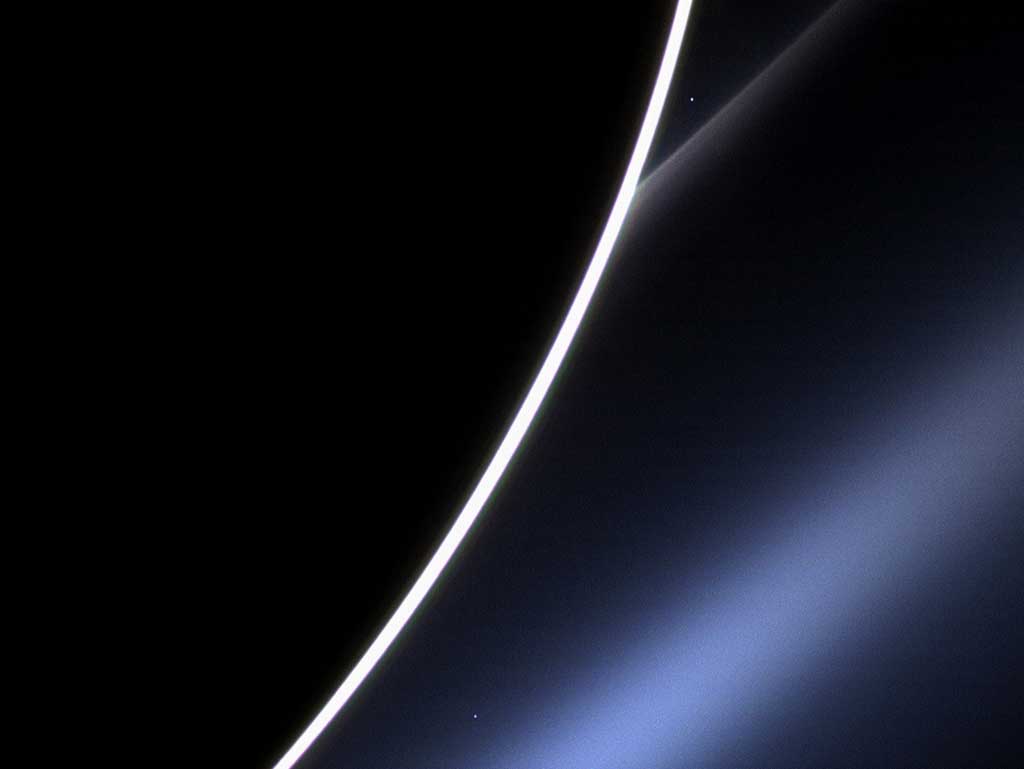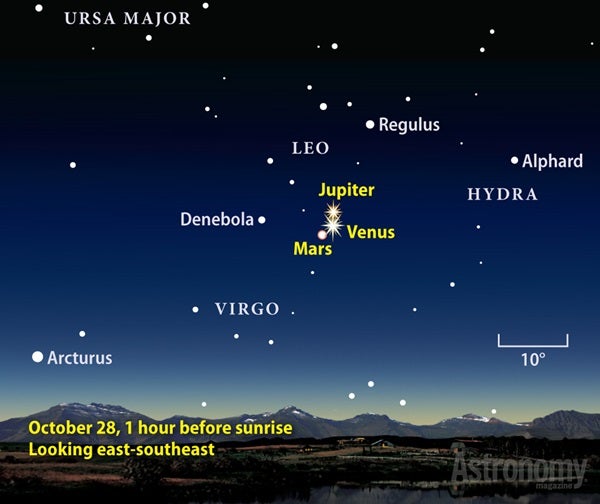Mid-September begins a two-month dazzling display of three bright planets before dawn. Venus leads the way, rising before twilight commences and appearing far brighter than either Mars or Jupiter.
Our sister planet reaches its greatest brilliancy of the year September 21, when it shines at magnitude –4.8 and appears on the border of the constellations Cancer and Leo. Mars lies to its lower left, glowing at magnitude 1.8 just a degree north of Leo’s luminary, 1st-magnitude Regulus. The Red Planet offers a lovely color contrast with the slightly brighter blue-white star. Meanwhile, Jupiter hugs the horizon 10° below Mars — the span of your closed fist held at arm’s length — but shines at a brighter magnitude –1.7. The gap between these two worlds tightens in late September.
Mercury joins the planetary trio in October’s morning sky for the most gorgeous planetary lineup of 2015. A crescent Moon briefly joins the crowd, jumping from one planet to the next in four consecutive days.
By October 1, Venus stands nearly 30° above the eastern horizon an hour before sunrise. A week later, on the 8th, a beautiful waning crescent Moon appears 4° above (west of) the planet. Mars then hangs 9° below Venus, and Jupiter is 4° lower than it. Once twilight starts, look for Mercury just above the eastern horizon.
The Moon drops lower with each passing day, appearing 4° to the right of Mars on the 9th and 7° below Jupiter on the 10th. By October 11, the slim lunar crescent sits just 1° to Mercury’s lower right. Grab your binoculars for the best view of this fine pairing. Mercury reaches its peak at greatest elongation October 15, when it shines
at magnitude –0.6.
The best action is happening above, however, where the three other planets are inching closer. Mars passes just 25′ — less than the apparent diameter of a Full Moon — north of Jupiter on October 17, when a telescope will show them in a single field of view.
But October’s finest planetary conjunction has to be on the 26th, when Venus passes 1.1° south of Jupiter. The event falls on the date of Venus’ greatest elongation, so both objects lie far from the Sun and stand high in a dark sky. Be sure to view the stunning pair with both naked eyes and binoculars. And don’t miss another nice grouping two days later, when Venus lies about 2.5° away from both Jupiter and Mars.
- Video: Easy-to-Find Objects in the 2015 Fall Sky, with Michael E. Bakich, senior editor
- StarDome: Locate the planets’ locations in your night sky with our interactive star chart.
- The Sky this Week: Get your planet observing info from a daily digest of celestial events coming soon to a sky near you.
- Sign up for our free weekly email newsletter.












